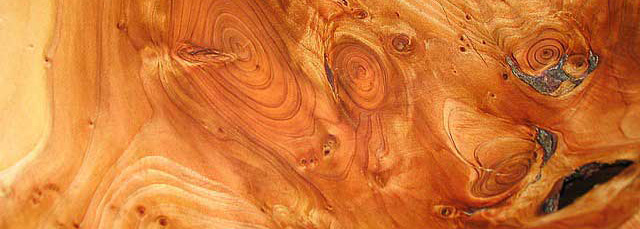FAQ
Questions and answers
If you cannot find your question here, don´t hasitate to contact us. We will be happy to help you.
Use our contact form below, write to us at [email protected], or call us at +49173-6271649.
Questions and answers
If you cannot find your question here, don´t hasitate to contact us. We will be happy to help you.
Use our contact form below, write to us at [email protected], or call us at +49173-6271649.

Ölen: The wooden sinks are treated with several wood oils over several days in a specially developed process. The aim here is to achieve the greatest possible depth for the oil in the wooden sink.
The viscosity of the oil and the processing temperature play a decisive role here. Before the final treatment, the wooden washbasin is sanded again to achieve the characteristic matt surface.
To prevent the colors from fading, it is advisable to re-oil the sink several times a year. A great advantage of oiling is that defects (e.g. Caused by violence) can be repaired selectively without any problems.
lacquering: The lacquering process takes place in several stages. First, several layers of a thermoset are applied by hand in a heating chamber under certain temperature and humidity conditions. After this high-strength and transparent protective layer has cured, the wash basin is sanded again and prepared for the final coating. Finally, the final painting takes place with a two-component clear coat. Finally, we will achieve an optimum in terms of resistance to aggressive liquids, resistance to UV radiation and resistance to wear and tear. This coating is maintenance-free. However, if this protective layer is damaged by rough force (e.g. impact with a glass bottle or other punctual impact loads), this damage must be repaired immediately. If this is not done, water could penetrate the wood. Then the wooden washbasin can only be repaired by renewing the entire coating.
Yes! Our washstand tops come ready-made and oiled and are intended for immediate use in the bathroom.
Nevertheless, bathing or showering leads to increased humidity in the bathroom, which means that when the warm temperature drops, condensation often settles on the bathroom furniture and is therefore more stressed than in a dry room. You should re-oil your oak panel two to three times a year so that the surface does not lose its resistant properties.
Impurities on a wooden washstand top are best removed with some lukewarm water.
It is important to wipe with a soft, clean cloth to avoid the risk of water stains. If there is heavy dirt on the wooden counter top, you can use a mild, non-corrosive household cleaner to remove the dirt.
The height of your washbasin is individually dependent on your height. The upper edge of the sink should be between 85-95 cm high.
Most countertop sinks are between 12-18 cm high, so the standard height for the top of the washstand is around 75 cm.
In the case of a single washbasin, the plate should protrude 20 cm on the right and left, as far as there is space, so that there is enough space for storage or for building a base cabinet!
In the case of double sinks, the standard width for a vanity top is 160 cm. Depending on how expansive your washbasin is and how the connections are made, widths of 140 or 200 cm are not uncommon.
How deep does a vanity top have to be?
The standard depth for vanity tops is between 40 and 55 cm. When choosing the depth, you first have to decide how deep the countertop washbasin is. At the front edge of the countertop washbasin, there should be at least 3-5 cm distance from the curved or straight edge, otherwise it will be restrictive. Another important factor influencing the depth is whether you use a wall tap or a standing tap. With a wall faucet, the plate can be a little less deep because the back edge of the washbasin can be placed just in front of the wall. With a standing water tap that is between the washbasin and the wall, a distance of at least 10 cm should be kept.
How are vanity tops attached? What is to be considered?
Before you screw the vanity top to the wall or on a cabinet, the openings for the water inlet and water outlet should be cut out to fit. Fresh saw edges must be re-oiled. If you prefer a free-hanging panel, you should fix it with the help of 2 solid brackets. Make sure that the wall is sufficiently strong, as the large vanity tops create a high level of leverage on the wall and screws. If you only have one plasterboard wall, reinforcements should be added to the back of the wall in advance to guarantee that the angles and the plate are securely held.
Where can I buy the right brackets?
In our online shop we offer the right angles and brackets for your vanity top!